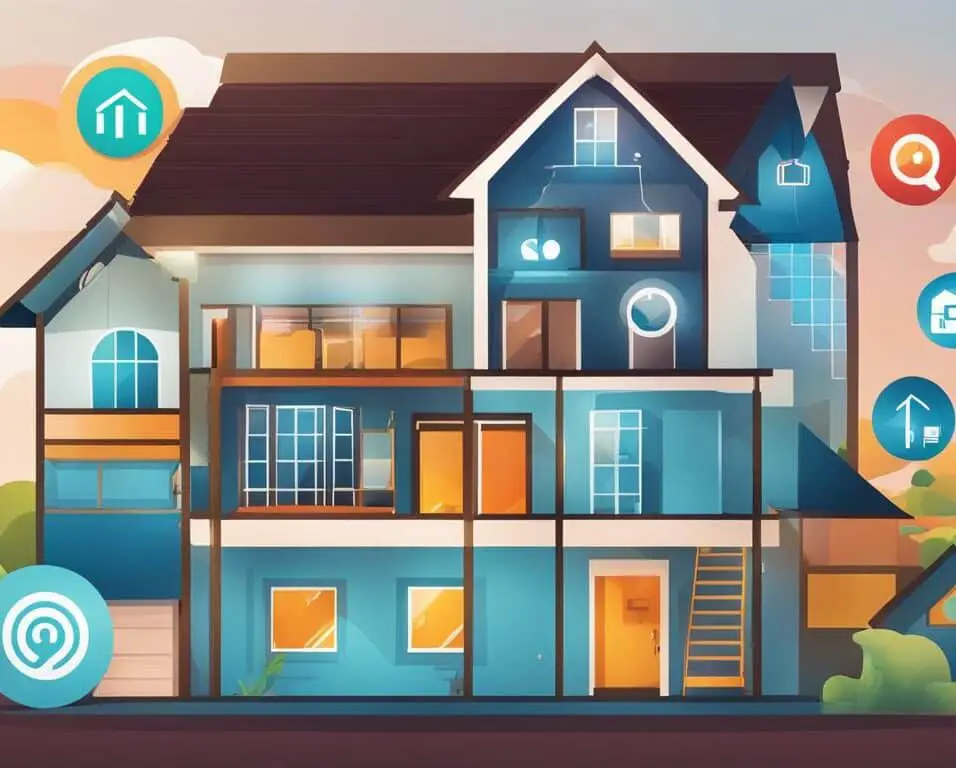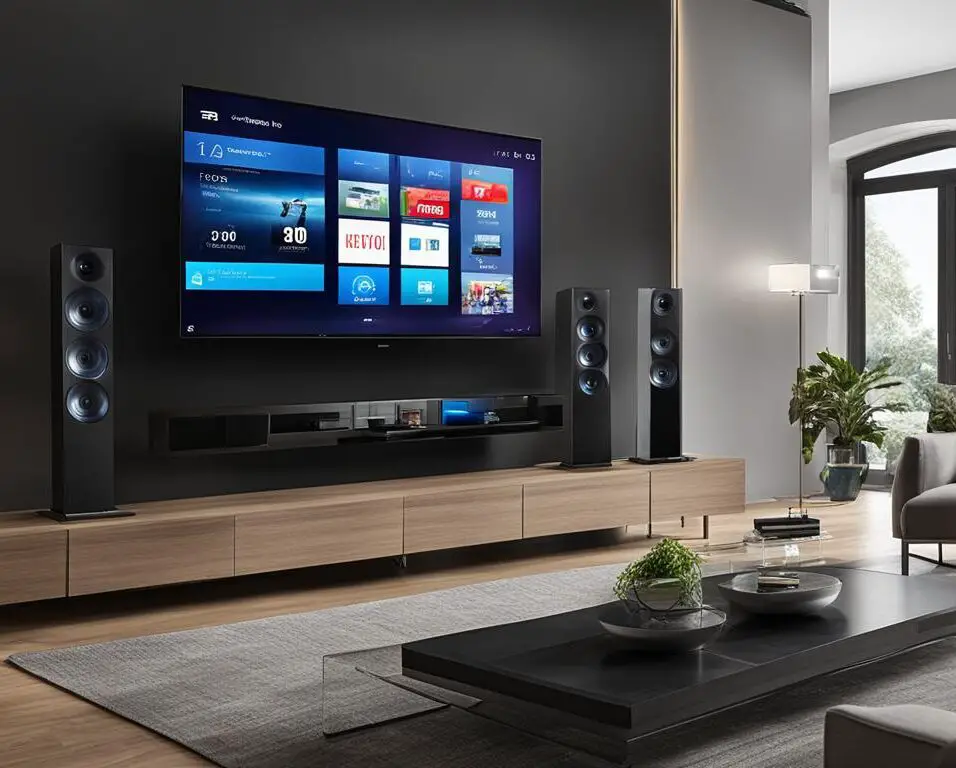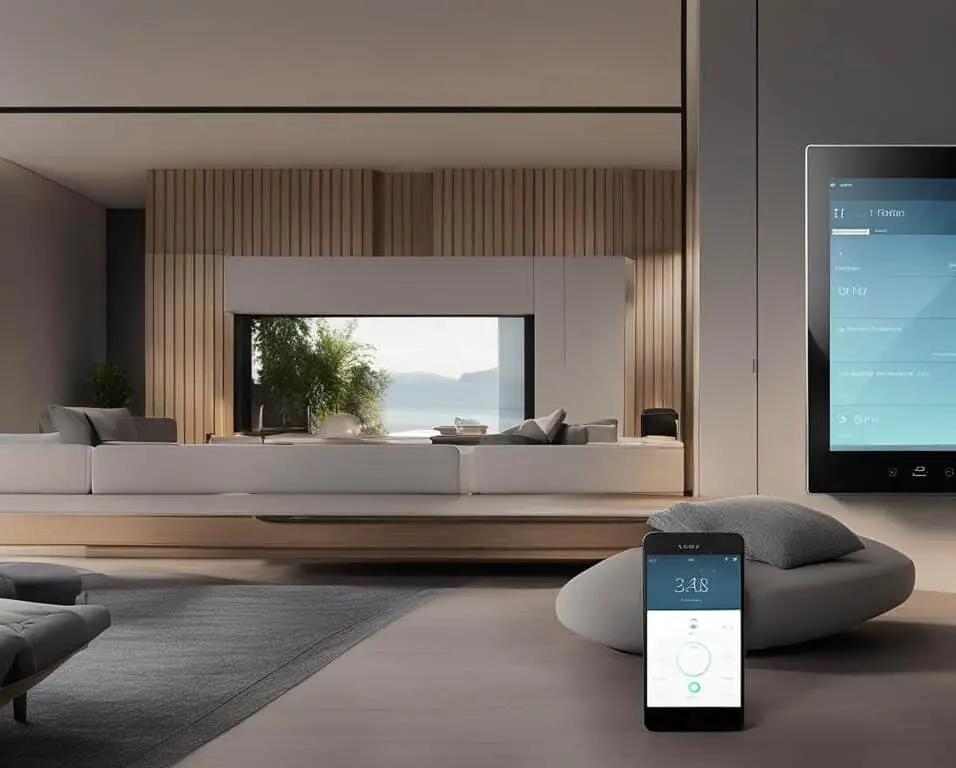The Impact of IoT on Home Automation
Home automation systems that incorporate the Internet of Things (IoT) are revolutionizing the way we control and automate our homes. These systems allow for seamless automation of various tasks such as heating and cooling, pet care, and appliance control. With the IoT, all of these devices can be connected to a single network, enhancing convenience and efficiency. Smart devices like coffee makers and beds can be programmed to notify users and adapt to their preferences. The benefits of IoT in smart home automation include improved security, simplification of tasks, and enhanced connectivity.
Key Takeaways:
- IoT in smart home automation improves convenience and efficiency.
- Smart devices can be programmed to adapt to user preferences.
- Home automation systems enhance security and simplify tasks.
- The IoT allows for seamless connectivity and control of devices.
- IoT devices are transforming the way we live in our homes.
Security and Simplification of IoT in Smart Home Automation
The integration of the Internet of Things (IoT) in smart home automation has revolutionized the way we control and manage our homes. However, along with the many advantages that IoT devices bring, such as convenience and increased efficiency, there are also security risks that need to be addressed. IoT home security has become a major concern as cyberattacks can compromise sensitive information and invade privacy.
To mitigate these risks, it is crucial to secure IoT devices and implement robust security measures. While there is currently no global association setting security norms for IoT devices, some companies are taking the initiative and incorporating security features into their devices. These measures include encryption protocols, secure authentication mechanisms, and regular firmware updates to patch vulnerabilities.
Despite the security challenges, the simplification of IoT in smart home automation offers significant benefits to homeowners. IoT devices provide an unparalleled level of control and convenience, simplifying tasks and making daily life more efficient. The growing trend of investing in IoT devices is a testament to their popularity among users. Easy installation, integration, and compatibility with various platforms have made smart home automation accessible to a wider audience.
WiFi has emerged as the most popular communication path for smart home devices due to its high data output and easy setup. Open-source standards like Matter are also contributing to the simplification of IoT in smart home automation by providing interoperability and trustability. These standards support secure VPN connections and multiple communication protocols, ensuring a seamless connectivity experience for homeowners.
With the continuous advancements in IoT technology, it is crucial to strike a balance between security and convenience in smart home automation. Implementing robust security measures while simplifying user experiences will be the key to fostering widespread adoption and enhancing the overall IoT ecosystem.
| Security Considerations | Simplification Benefits |
|---|---|
| Implement encryption protocols | Easy installation and integration |
| Secure authentication mechanisms | Compatibility with various platforms |
| Regular firmware updates | Enhanced control and convenience |
Table: Security Considerations vs. Simplification Benefits in IoT Smart Home Automation
Connectivity and Future of IoT in Smart Home Automation
The connectivity of IoT in smart home automation plays a crucial role in creating a seamless and integrated experience for homeowners. By establishing common standards and protocols, we can improve connectivity and trustability, paving the way for the development of innovative products that enhance our daily lives.
With the advent of 5G connectivity, IoT devices are becoming even more powerful. The use of 5G enhances manufacturing processes and enables more effective smart homes. By leveraging this technology, smart devices such as doorbells, thermostats, and appliances can optimize energy usage, increase security, and provide personalized experiences tailored to the unique needs and preferences of homeowners.
The future of IoT home automation holds great promise. As interconnectivity continues to advance, we can expect to see greater integration of artificial intelligence, expansion of the IoT ecosystem, and enhanced data security and privacy measures. These advancements will further enhance the convenience, efficiency, and functionality of smart homes, making our lives easier and more enjoyable.
When it comes to IoT home automation, connectivity is key. By establishing a common protocol and language, we enable devices to communicate seamlessly, allowing for a truly personalized and interconnected experience. As we continue to embrace the power of IoT, we can look forward to a future where smart homes not only simplify our lives but also enhance our overall well-being.
FAQ
What is home automation and how does it incorporate the Internet of Things (IoT)?
Home automation refers to the use of smart devices and systems to control and automate various tasks in the home. With the Internet of Things (IoT), these devices can be connected to a single network, allowing for seamless automation and enhanced convenience and efficiency.
What are the benefits of using IoT in smart home automation?
The benefits of IoT in smart home automation include improved security, simplification of tasks, and enhanced connectivity. IoT devices can optimize energy usage, increase security, and provide personalized experiences for homeowners.
Are there security risks associated with IoT in smart home automation?
Yes, cyberattacks by hackers can compromise sensitive information and invade privacy. It is important to secure IoT devices to prevent such cyberattacks.
Are there any security features added to IoT devices to prevent cyberattacks?
While there is currently no global association setting security norms for IoT devices, some companies are adding security features to their devices to enhance protection against cyberattacks.
What communication path is commonly used for smart home devices?
WiFi is the most popular communication path for smart home devices. It offers high data output and easy setup, making it convenient for homeowners.
What are open-source standards in IoT smart home automation?
Open-source standards like Matter provide interoperability and trustability, supporting secure VPN connections and multiple communication protocols. They ensure compatibility and seamless integration of IoT devices with various platforms.
How does connectivity impact the effectiveness of IoT in smart home automation?
Connectivity is crucial for ensuring devices work together seamlessly in a smart home. Common standards and protocols improve connectivity and trustability, enabling the development of innovative products and personalized experiences for homeowners.
What advancements can we expect in the future of IoT home automation?
The future of IoT home automation holds promise with advancements in interconnectivity, integration of artificial intelligence, expansion of the IoT ecosystem, and enhanced data security and privacy measures. These developments will further enhance the convenience, efficiency, and functionality of smart homes.








